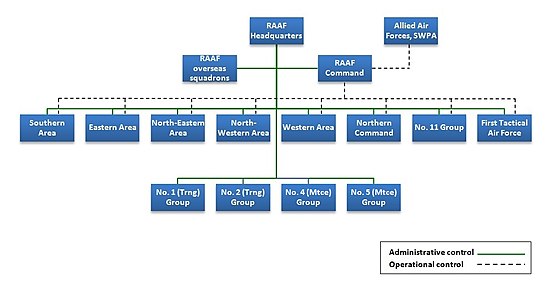No. 11 Group RAAF
11 Group was a Royal Australian Air Force (RAAF) group formed at Morotai in the last weeks of World War II to command the RAAF's garrison units in the region.
1 TAF) took part in the advance of Allied forces along the northern coast of New Guinea, followed by the invasions of Morotai in the Netherlands East Indies and several locations on or around Borneo.
These bases required air garrisons to protect them from remnant Japanese forces, as well as administrative units to maintain a supply chain back to Australia.
1 TAF from its garrison duties and enable it to focus on future offensives, the RAAF proposed to the Commonwealth Government that a static command be established.
1 Air Garrison Force"), Air Vice Marshal Bill Bostock explained that while it shared the static characteristic of an area command, it differed in that the area commands were part of the RAAF's permanent structure and situated within the borders of Australia's mainland and overseas territories, whereas the new formation was a temporary wartime measure, headquartered on foreign territory.
The principal RAAF airfields in these areas were at Hollandia, Biak, Middelburg, Morotai, Labuan and Tarakan.
11 Telecommunications Unit was also formed on 1 August to provide communications services for the group.
11 Group was fully formed and assumed its full responsibilities, and its combat operations were limited to small strikes against Japanese positions on Halmahera.
11 Group commanded an attack on Halmahera which involved twelve B-24 Liberator heavy bombers from the United States Thirteenth Air Force and six No.

